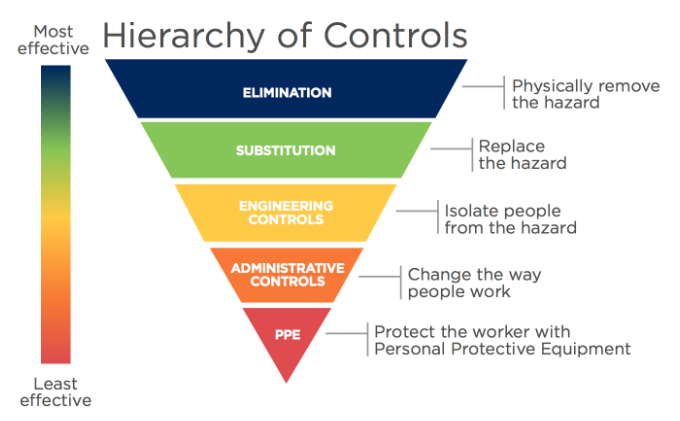Careful Insulation Selection and Installation Can Protect R-Value and Health
Oct 9, 2018
Proper installation techniques as well as protection during installation are key to achieving optimal product performance and to protecting both workers and residents during and after insulation is installed.
Product Performance
Because incorrect installation can lead to compromised performance for any type of insulation, it is critical to carefully follow installation protocols for any product. A few examples of important steps in the installation process, focused on fiber glass, cellulose, and spray foam insulation, are given below.
- To achieve the tested R-value, batt insulation must be carefully fitted so that it touches all sides of a cavity, leaves no gaps, and is not compressed.[1] While blown fiber glass or cellulose can make it easier to entirely fill cavities, settling may be an issue. In horizontal installation, loose cellulose settles a small amount over time, so the installed thickness must be adjusted to account for this. In dense-pack applications for fiber glass and cellulose, variations in installation techniques or installed density can lead to variations in R-value and airflow reduction, or to settling over time that can create gaps in the insulation.[2]
- Because spray foam insulation is manufactured on site as it is installed, several variables can affect performance, such as proper mix ratio, ambient temperature and humidity, substrate cleanliness, thickness of a single pass, and overall installed thickness. Problems such as cracks, blowholes in the foam, shrinkage away from the framing, or even scorching within the foam due to excessive heat given off by the chemical reaction have all been observed.[3]Cracks, holes, or gaps formed during installation may be difficult to detect and can compromise the R-value and air-sealing properties if they are not remedied.[4] There can also be significant nonuniformity in an application.[5]Improper installation can lead to gummy or brittle foam, as well as lingering odors, which are both performance and health concerns.[6]
Safety
Proper installation is also key to protecting installer and resident safety. Most product literature suggests the use of certain personal protective equipment (PPE) when installing different insulation products, but the level of required PPE varies widely among different types of insulation, as noted below.
- For installation of fiber glass insulation, skin protection (long sleeves, long pants, and gloves), eye protection, and a dust respirator are recommended.[7] Similar recommendations are made for cellulose insulation.[8]
- In contrast, required PPE for spray foam installation usually includes full body protection in the form of disposable coveralls, chemical-resistant gloves and boots or booties, a hood, and eye and face protection as well as supplied air respirators.[9] Spray foam insulation reacts on site, and hazardous chemicals are given off during this process. Respiratory impacts from isocyanate exposure can come not just from breathing in vapors, but also from skin contact with the chemicals.[10] Spills or leaks and cleaning processes present potential for additional exposure, as does the presence of unreacted isocyanates in dust created during trimming.[11] Excessive heat release can also lead to fires in extreme cases.[12]
Building residents and other workers should vacate a building during spray foam installation and until the foam has finished curing and the building has been ventilated and thoroughly cleaned. The EPA notes that, “It is not clear how much time is needed before it is safe for unprotected workers or building residents to re-enter”[13] and that, “Since re-entry time is dependent on product formulation and other factors that affect curing, more general research as well as product specific studies are needed to understand when it is safe for unprotected workers or building/home residents to re-enter.”[14]
While the industry has taken measures to provide educational materials and many installers most likely follow the prescribed guidelines, the fact remains that there are still cases where homeowners or installers become ill because of spray foam installation.[15] Problems noted in the last several years by the Occupational Health Clinical Centers in New York include: “possible improper application of the foam; inadequate respiratory protection and ventilation for workers; spray foaming when the building was occupied; re-occupying too soon (estimated at 23-72 hours but there is little evidence to support current recommendations); and lack of warning about the health hazards of spray foam insulation for the home owners and workers.”[16]
Optimizing for safety: Elimination and Substitution
The hierarchy of controls framework for workplace safety ranks elimination and substitution as the most effective hazard protection. The controls currently recommended by the SPF industry — personal protective equipment (PPE), administrative controls (such as policies and training), and engineering controls (like ventilation) — are less effective protection. There are a variety of reasons for this, including that PPE is not always used.[17] The California Department of Toxic Substances Control (DTSC) notes, “PPE and engineering controls are considered the lowest tiers in the Hierarchy of Controls against occupational exposure to hazards because any user-error or malfunction can result in exposure to the hazard … Because SPF applications produce measurable concentrations of airborne [isocyanates] in the breathing zone, any person involved in, or near, the application risks exposure to [isocyanates] even when protective measures are used.”[18]
One representation of the Hierarchy of Controls as illustrated in Making Affordable Multifamily Housing More Energy Efficient: A Guide to Healthier Upgrade Materials

This post was adapted from Making Affordable Multifamily Housing More Energy Efficient: A Guide to Healthier Upgrade Materials.
Find out more about the performance characteristics of different insulation materials, their relative cost, and their content and associated health hazards in the full report.
Learn more about hazards throughout the life cycle of spray foam insulation in our webinar recording and follow up Q&A, featuring HBN researchers and Greg Siwinski, certified industrial hygienist with the Occupational Health Clinical Center (SUNY Upstate Medical University).
In line with their goal to “reduce human and environmental exposures to toxic chemicals in consumer products,” CA DTSC listed Spray Polyurethane Foam Systems with Unreacted Methylene Diphenyl Diisocyanates as a Priority Product in July of this year. See their announcement about this regulation for more information.